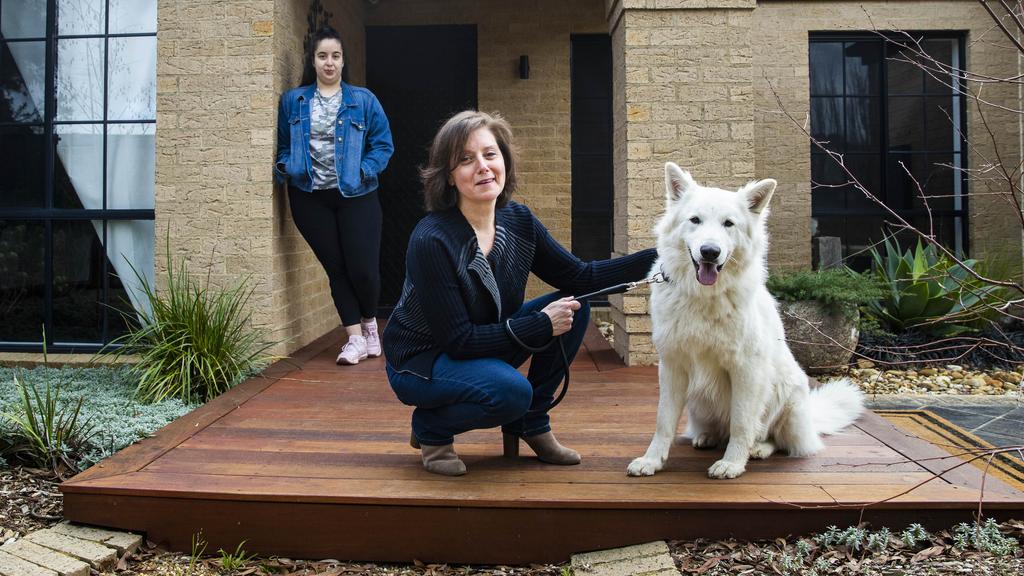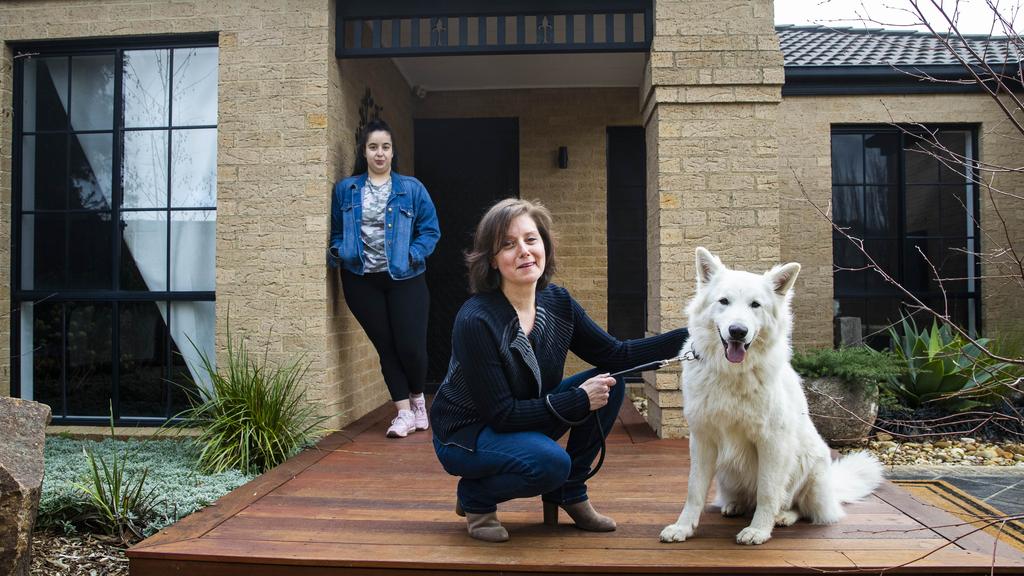Working from home to sustain flight from the city as bosses see the benefits

Maria Pavone with daughter Alessia and dog Roi. Picture: Aaron Francis/The Australian
The big ‘what if’ that has been hanging over the Covid-sparked regional property boom has always been what happens when employers want workers back in inner-city offices.
But new data from networking and job site LinkedIn has found that employers have embraced greater work-life balance, with the number of jobs offering remote work options still rising.
Through 2020, Australian job listings on the platform offering flexible work options experienced a 14-fold hike compared to pre-pandemic figures. Despite many businesses returning to the office last financial year, ads including the choice to work from home rose nearly three times on last year over the first five months of 2021.
Demand for property in Australia’s regions over the past 18 months has skyrocketed, causing prices to rise 17.7 per cent last financial year, according to figures from property researcher CoreLogic. The change significantly outpaces increases in capital cities, which were up 12.4 per cent over the year to June.
Managing director of LinkedIn Australia and New Zealand Matt Tindale said organisations were looking at more hybrid or flexible arrangements so they could access a greater pool of talent from across the country.
“Clearly we’ve gone through the greatest workplace upheaval anyone can remember and workplace norms are just completely changing and we really think this is here to stay,” Mr Tindale said.

Maria Pavone pictured with her daughter Alessia and dog Roi at their home in Mt Martha in the Mornington Peninsula. Picture: Aaron Francis/The Australian
“Globally, we have seen a six times increase in remote work applications. At the same time … many companies are looking to the future of work and really realising this remote and hybrid flexibility is pretty much going to be the way forward across many industries. We are seeing this happen in Australia as well.”
Bernard Salt, managing director of The Demographics Group, said Australians had experienced a taste of working from home and would not give it up easily.
“In the first six months, this concept was a curiosity,” Mr Salt said.
“It’s now looking like a two-year global phenomenon.
“People are learning new skill sets, setting up their home and changing their lifestyles. It’s what Aussies deep down yearn for.”
After living in Melbourne’s inner-city for the past few decades, Amedeo Concollato and Maria Pavone, aged 56 and 53, decided it was time for a change.
The couple packed up their Brunswick pad in March, swapping it for a home in Mt Martha, on the Mornington Peninsula.
Now, Mr Concollato continues to commute to his construction job, while Ms Pavone has used the time freed up by her bookkeeping job going remote to start her own dance costume business from the work shed.
“We were running away from the city,” said Ms Pavone.
“Seeing how the landscape changed from noise and people through that hard lockdown to a ghost town – it just didn’t feel right any more.
“We just needed a change and this really felt like home.”
CoreLogic’s head of research Eliza Owen said remote work should promote the sustainable popularity for housing in regional areas, particularly in coastal and lifestyle locations. However, she notes the massive price gains are likely to slow in the longer term.
“Given housing demand and price uplifts have been strongest in the past year across more expensive, lifestyle markets (such as Richmond-Tweed, the Sunshine Coast, Illawarra and the Southern Highlands/Shoalhaven region) it suggests movement to the regions through 2020 may have also come from desirability, and that is more a reflection of the enablement of remote work,” she said.







